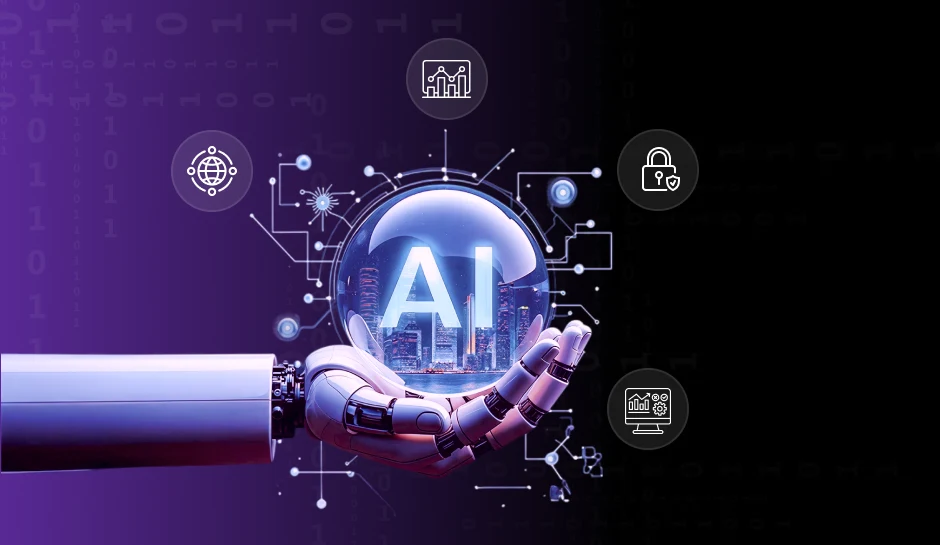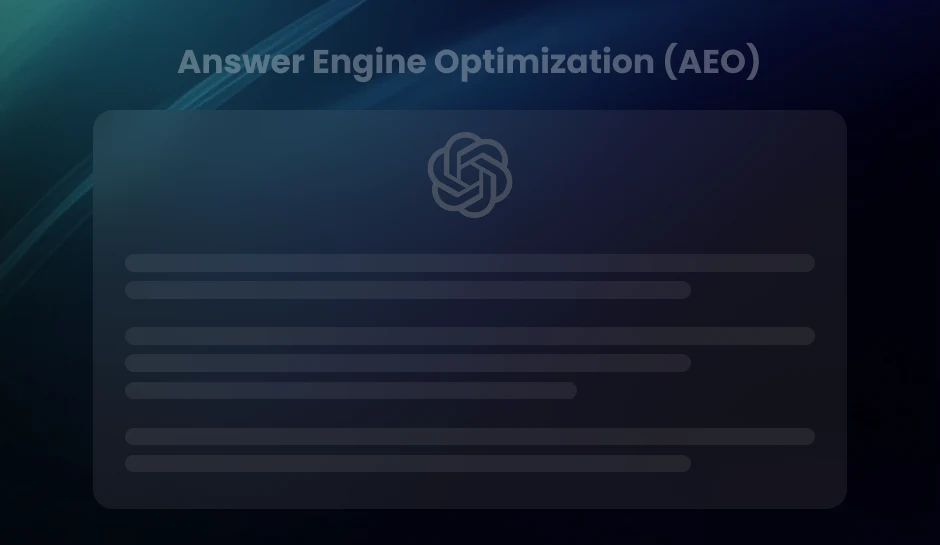
Decoding Tomorrow: How AI Predicts Customer Behavior with Precision
AI doesn't guess; it learns. By analyzing user activity across touchpoints, AI predicts behaviors like purchases, churn, and engagement with striking accuracy. Learn how businesses use these insights to personalize outreach, optimize timing, and increase retention.
In rapidly evolving digital markets, predictive customer behavior has become a strategic lever for businesses seeking to maximize engagement and profitability. This method involves analyzing past interactions to estimate how a customer will act in the future, whether that means purchasing a product, abandoning a cart, or responding to a marketing campaign. The ability to forecast these patterns isn’t speculative; it’s grounded in statistical modeling and machine learning.
AI systems now drive this transformation. By processing vast arrays of data, everything from purchase histories to clickstreams, artificial intelligence identifies patterns invisible to the naked eye. Each customer interaction becomes a signal, contributing to a clearer picture of individual behavior over time. When algorithms estimate future actions, they don’t guess; they calculate probabilities based on real-time insights. These processes are reshaping how businesses predict and influence buying decisions, personalize experiences, and optimize operations.
The Role of AI in Predicting Customer Behavior
Extracting Actionable Insights from Complex, High-Volume Data
Legacy systems struggle to keep up with the volume of real-time data streaming from apps, websites, IoT sensors, and CRM tools. AI systems, particularly those built on deep learning and neural network architectures, don’t just manage data; they learn from it. By ingesting structured and unstructured data in massive volumes, AI identifies non-obvious correlations between customer behaviors and future actions. For instance, convolutional neural networks (CNNs) can analyze visual product interactions, while recurrent neural networks (RNNs) trace behavioral sequences across timelines.
Consider a retail platform processing clickstream data from millions of users weekly. Traditional analytics might tap into basic trends; AI systems parse micro-patterns such as pauses in navigation, time-on-screen, or scroll depth-to forecast purchase intent. Sentiment analysis of post-purchase reviews further fine-tunes these predictions.
Anticipating and Mapping Customer Journeys with Precision
Traditional customer journey mapping depends on predefined funnels and historical benchmarks. AI incorporates dynamic behavioral modeling that adapts as consumer behavior evolves. Using predictive analytics, AI recreates the purchase path by evaluating variables such as session frequency, cart size fluctuations, and time-lag between browsing and conversion.
- Path analysis algorithms dissect interaction histories to predict probable next steps.
- Clustering algorithms like K-means differentiate intent-driven behavior from casual browsing, enabling granularity in targeting strategies.
- Reinforcement learning models test multiple journey scenarios simultaneously, converging on the most probable customer outcomes.
As a result, companies can forecast not only what a customer might do next- purchase, unsubscribe, upgrade- but also when and why.
Streamlining Decisions Through AI-Driven Precision
Decision-making shifts from reactive to proactive when powered by AI. Machine-led predictive models reduce time-to-insight and minimize the margin of human error. AI systems integrate with customer data platforms (CDPs) and marketing automation tools, continuously feeding real-time predictions into operational pipelines.
- Dynamic pricing engines adjust rates based on the predicted sensitivity of customers to price changes.
- Retention algorithms initiate loyalty rewards when defection becomes statistically likely.
- AI-led inventory management systems anticipate demand spikes based on behavioral triggers.
No manual forecast can match the speed at which AI correlates signals and initiates action. Businesses utilize this advantage to transition from static campaigns to agile, behavior-aligned strategies that adapt in real-time.
Pro Tip-Integrate AI predictions directly into your customer-facing workflows. For maximum impact, don’t stop at insights, embed AI outputs into personalization engines, chatbots, and campaign triggers. This allows your marketing and CX teams to act on behavioral signals as they emerge, turning predictions into timely, context-aware engagement.
The Machine Learning Algorithms That Power Predictive Customer Behavior
Supervised vs. Unsupervised Learning in Behavioral Analysis
The distinction between supervised and unsupervised learning defines how machine learning models interpret customer behavior. In supervised learning, historical data with labeled outcomes guides the algorithm. Purchase history, churn rates, and product preferences become the backbone of training datasets. This approach suits prediction tasks such as “Will this customer renew their subscription next quarter?”
Unsupervised learning, on the other hand, focuses on pattern discovery without predefined categories. Clustering algorithms like K-means or DBSCAN identify behavioral segments that aren’t immediately visible. These segments might surface latent groupings based on frequency of visits, basket size, or interaction recency. In retail, unsupervised learning helps uncover micro-segments that traditional CRM systems often miss.
Training Models on Behaviorally Relevant Data
Without the right training data, even the most advanced algorithm will produce noise. Relevance comes not only from volume but also from diversity and context. Transaction logs, clickstream data, social media signals, support interactions, and geolocation histories must be cleaned, labeled when needed, and balanced to avoid bias. Overfitting to a single behavioral path, say, only modeling recurring customers, will yield lopsided insights that fail to generalize.
Feature engineering amplifies the predictive power of customer data. Recency, frequency, monetary value (the RFM model), time between purchases, and categories browsed form high-value inputs. More nuanced behavioral traits, such as dwell time on product pages or abandoned cart frequency, further sharpen prediction accuracy when integrated into model training.
Training and Validating Behavioral Models to Optimize Predictive Accuracy
A model that performs well on one dataset can fail spectacularly in the real world. To avoid that, businesses divide customer data into training, validation, and test sets. This separation enables developers to tune the model’s parameters on the training set, evaluate its generalization using validation data, and ultimately measure its true performance on unseen data.
Cross-validation, especially k-fold cross-validation has become a go-to method for improving model robustness. In this approach, models are trained and evaluated across multiple data partitions, and performance is averaged to reduce variance. Coupled with techniques like regularization and hyperparameter tuning (using tools like grid search or Bayesian optimization), model accuracy can improve dramatically.
Modern tech stacks often include automated machine learning (AutoML) platforms, such as Google Cloud AutoML or Microsoft Azure ML Studio. These platforms streamline the optimization process, automating algorithm selection, feature engineering, and performance benchmarking.
Predictive Use Cases: Product Interest, Churn, and Purchase Intent
Companies implement predictive modeling to solve specific behavioral challenges. The following use cases illustrate the power of these techniques:
- Product Interest Prediction:
- Customer Churn Forecasting:
- Purchase Intent Detection:
E-commerce platforms analyze clickstream data, dwell time, and browsing history to forecast the probability of interest in a newly launched product. Algorithms like behavioral collaborative filtering and boosted decision trees rank products based on individual user profiles.
Telecom and SaaS providers track login frequency, support ticket volume, subscription downgrades, and sentiment data to predict churn within the next billing cycle. Classification models built on historical cancellation patterns reach precision levels above 90% in some enterprise deployments.
Retailers monitor cart additions, promo clicks, and time-to-checkout metrics. By feeding behavioral signals into regression or neural network models, marketers identify high-conversion leads and align retargeting efforts accordingly.
These models don’t just describe customer behavior; they direct business strategy. Marketing campaigns, retention initiatives, and product recommendations are anchored in these predictive insights, turning raw data into profitable action.
Personalized Marketing Through Predictive Insights
Tailoring Messages and Offers with Behavioral Predictions
Predictive analytics powered by AI isolates intent signals long before a customer takes action. By identifying browsing patterns, purchase history, and interaction frequency, AI models forecast individual preferences and interests. When marketing teams feed these signals into campaign engines, the output stops being generic; it becomes personal. Offers align with need-states. Timing matches individual cycles of decision-making.
Consider a customer who browses fitness gear every Tuesday evening. With behavioral prediction in place, the system schedules tailored promotions, price drops on sportswear, or early access to new collections, right when interest peaks. This increases product relevance and improves conversion probability.
- Email subject lines shift dynamically a high-value prospect sees urgency-driven language, while a deal-seeker might receive discount-led phrasing.
- Product recommendations within ads and on websites prioritize items similar to what the customer previously considered but didn’t buy.
- Retargeting strategies can anticipate rather than react, suggesting add-ons or bundles before the customer thinks to purchase.
Dynamic Content Personalization in Real Time
AI frameworks that operate on streaming data personalize content at the moment of interaction. This isn’t based on segmented personas; it taps into real-time context. For example, weather, location, and current device behavior can redefine what the user sees.
A customer browsing on a mobile app after work on a rainy Thursday evening receives different homepage messaging than they would on a clear Sunday morning from a desktop. AI dynamically reorders promotions, modifies push notifications, and changes the banner copy, without marketer involvement at the moment of execution.
Companies implementing reinforcement learning in their content engines allow models to adapt continuously to micro-behavioral trends. This improves not only personalization but also performance, as content calibrates itself based on real-time interaction metrics like scroll depth, dwell time, and click patterns.
Pro Tip-Leverage micro-moments to maximize personalization. Use AI to detect and act on fleeting but high-impact user contexts, like time of day, device type, or local weather, to deliver hyper-relevant content. These micro-moments, when optimized, can significantly boost engagement and conversion rates without requiring manual campaign updates.
Natural Language Processing (NLP) for Customer Insight
Extracting Sentiment, Intent, and Feedback Through Text Analysis
Natural Language Processing (NLP) enables machines to read, interpret, and derive meaning from human language. In customer behavior prediction, NLP delivers measurable insight by uncovering sentiment, identifying intent, and interpreting feedback embedded in textual data. This includes structured sources like support tickets and unstructured sources such as online reviews or open-ended survey responses.
By running sentiment analysis algorithms on large volumes of customer-written content, businesses can quantify emotional tone with high accuracy. Tools like VADER (Valence Aware Dictionary for Sentiment Reasoning) and TextBlob deliver polarity scores that classify text as positive, neutral, or negative. OpenAI’s GPT models, or Google’s BERT architecture, go a step further by detecting the nuance in sarcasm, complex narratives, or mixed emotions. Sentiment trends can highlight brand perception shifts, product satisfaction, and emerging frustration points before they trigger churn.
Intent detection models, trained through supervised learning using annotated customer statements, categorize user actions, such as “looking for product details,” “ready to purchase,” or “having a technical problem”. This allows companies to funnel inquiries with greater precision and personalize real-time responses. Through feedback classification, NLP models can automatically detect themes such as pricing concerns, feature requests, or UX friction, giving product teams an aggregated, automatically prioritized stream of customer input.
Mining Behavioral Signals in Chat Logs, Reviews, and Social Content
Every customer interaction generates linguistic data. Live chat conversations, product reviews, support emails, Reddit threads, tweets, all of these act as behavioral artifacts. NLP processes these artifacts to uncover latent patterns and emerging customer behavior signals at scale.
- Chat logs: NLP models can segment conversation stages (greeting, issue description, resolution) and track escalation paths or time-to-resolution trends. Analysis can optimize agent workflows and script effectiveness.
- Reviews: Models like aspect-based sentiment analysis split product reviews into attributes, such as battery life, usability, or shipping, and assign sentiment to each. This produces fine-grained product feedback without manual tagging.
- Social media: Transformer models monitor mentions, hashtags, and replies to monitor real-time shifts in customer discourse. NLP flags virality risks or rising advocacy in specific demographics or regions.
For example, an NLP engine trained on customer chat transcripts from a telecom company might identify a repetitive pattern: users mentioning “dropped calls in Chicago” within the same timeframe. Combining temporal clustering with named entity recognition surfaces a probable network outage even before technical teams detect it from infrastructure signals.
Optimizing Product and Communication Strategy Using Language Data
The data extracted through NLP isn’t limited to diagnostics- it feeds product refinement and content strategy. By analyzing linguistic patterns in customer questions, product teams can identify design gaps or unclear features. When customers repeatedly ask, “Does this work with iOS 17?”, it points to a perceived compatibility uncertainty that may not exist but matters in their decision-making.
On the communication side, tone analysis in marketing copy, onboarding instructions, or chatbot responses ensures alignment with audience expectations. NLP tools can simulate reader perception-e.g., detecting when help center articles sound condescending or too technical. Alignment of tone, clarity, and emotional resonance increases trust and boosts conversion rates.
Are customers describing your product the way you are? NLP makes that comparison possible. By mapping the semantic fields customers use words like “simple,” “powerful,” and “expensive” to your brand communication, organizations adjust narratives to meet real perceptions, improving engagement and authenticity.
Pro Tip- Continuously train NLP models on your own customer data. Generic models provide a solid foundation, but true insight comes from context-specific training. Fine-tune sentiment and intent models using your company’s chat logs, reviews, and emails to dramatically increase accuracy and relevance in predicting behavior and improving customer experience.
Omnichannel Customer Engagement Based on Predictive Behavior
Unifying Data Across Channels
Customers interact across a web of touchpoints, browsing on mobile, purchasing in-store, responding to emails, or engaging on a brand’s website. Each of these interactions generates behavioral data that reflects intent, preferences, and decision-making patterns. Relying on fragmented datasets limits both outreach and results. Integrating data across these platforms transforms siloed engagement into cohesive interaction.
AI systems designed for predictive analysis ingest structured and unstructured data from every channel. These systems align customer IDs, session metadata, device fingerprints, and historical activity to build a unified behavioral profile. When a user begins a transaction on a desktop, receives a cart abandonment email, and then completes a purchase on a mobile, AI maintains the continuity of that interaction by recognizing the individual across platforms, not the devices.
Predictive Models That Drive Consistency
Consistency in tone, offering relevance, and timing across touchpoints isn’t guesswork; it’s a byproduct of predictive modeling. AI examines variables such as browsing duration, click paths, product affinity clusters, and even scroll velocity to anticipate next actions. For example, if a user repeatedly navigates to a high-ticket item during late-night sessions, the system predicts not only buying interest but also preferred engagement windows. This insight informs scheduled push notifications or personalized in-app messages tailored to that timeframe.
Retailers deploying such models report notable uplifts. According to a 2023 McKinsey study, companies employing AI to drive multichannel consistency experienced a 15-20% increase in customer satisfaction scores and a 25% lift in conversion rates. The precision behind these results comes from real-time adjustments made by AI when behavioral signals deviate from expected patterns.
Real-Time Engagement Powered by AI
Managing conversations at scale requires more than human intervention; it necessitates AI agents capable of retaining context, detecting sentiment, and managing autonomous responses. Natural Language Understanding (NLU) models enable virtual assistants to interpret customer queries across various messaging platforms and respond with content tailored to the user’s stage in the purchase journey.
Retail chains using AI-driven engagement across web, app, and physical locations, such as Sephora and Nike, have cut customer service resolution times by over 30% while simultaneously improving ROI on engagement campaigns.
- Web: Personalized homepage layouts, targeted banner placements based on predicted interest.
- Mobile: In-app messages adjusted by current location, app activity, and predictive interaction likelihood.
- Email: Send-time optimization algorithms selecting optimal delivery times based on past open behavior.
- In-store: Clienteling platforms surfacing AI-driven suggestions to store associates via POS terminals.
Predictive behavior modeling doesn’t just inform what to say or offer, it dictates when, where, and how those messages land for maximum relevance. Brands that operationalize this model across every customer-facing touchpoint consistently outperform those that rely on reactive, channel-specific strategies.
Pro Tip- Break down internal data silos before scaling omnichannel AI. Predictive engagement only works if data flows freely across systems, CRM, POS, web analytics, app usage, and customer support must speak the same language. Prioritize building a centralized customer data platform or equivalent integration layer to ensure AI models have the full behavioral picture before making decisions.
Strategic Decisions Empowered by AI-Driven Behavior Prediction
Transforming Strategy with Predictive Precision
AI-driven behavior prediction enables companies to shift from reactive tactics to precision-guided strategy. By leveraging advanced algorithms and behavioral models, decision-makers now base their moves on foresight rather than hindsight. These predictions don’t just suggest what might happen- they provide concrete evidence of what’s likely to happen, when, and why.
Aligning Products, Marketing, and Customer Experience
Predictive insights guide cross-functional alignment. Product teams identify unmet needs before they crystallize, enabling targeted R&D. Marketing harnesses behavioral clustering to tailor campaigns with surgical precision, increasing conversion while reducing cost-per-acquisition. Customer experience adapts in real time based on predicted emotional triggers and decision journeys.
- Launch timing can now mirror peak behavioral readiness, not just calendar cycles.
- Messaging reflects inferred intent rather than demographic assumptions.
- Product feature sets evolve based on modeled usage data, not anecdotal feedback.
Driving Organizational Evolution
Enterprises that integrate AI-driven behavior prediction move toward proactive architectures. Traditional departments, sales, service, product, and operations begin to function around shared predictions, not siloed KPIs. Predictive dashboards become common in C-suite strategy reviews. Planning now includes high-resolution foresight into customer shifts, enabling interventions and innovations ahead of demand curves.
Shifting the Paradigm: From Reactive Response to Predictive Action
Businesses that continue to rely on retrospective analysis miss real opportunities already visible in their customer data. AI-driven customer behavior prediction doesn’t just forecast tendencies, it rewires how teams make decisions. Structured data transforms into patterns; those patterns evolve into foresight. The result: a business that sees the customer’s next move before it happens.
Through AI, raw customer interactions, such as website visits, app activity, and transactional history, become actionable insights. Machine learning models identify micro-trends invisible to manual analysis. NLP systems extract sentiment shifts buried in service interactions. Recommendation engines evolve into behavioral mirrors. Every data point contributes to a sharper image of intent, urgency, and loyalty, all in real time.
Competitive advantage comes from anticipation, not reaction. Teams gain a tangible edge when powered by models that learn continuously, adapt to contextual triggers, and deploy results fast enough to act. Engagement strategies grow more precise. Retention campaigns intervene preemptively. Sales forecasts shift from conservative estimates to confident projections backed by computed probability.
What Comes Next?
- Audit your current data ecosystem: Identify where customer behavior data is collected, how it’s stored, and what insights are missing. This baseline is non-negotiable.
- Implement scalable AI systems: Choose platforms that integrate with your CRM, marketing automation stack, and e-commerce engine to ensure real-time feedback loops.
- Invest in model iteration: Start with foundational algorithms-classification, clustering, regression-but commit to refining models via continuous learning and feedback injection.
- Build a cross-functional analytics culture: Predictive success depends on collaboration across marketing, product, and data science. Insights must fuel experiments, not slide decks.
Key Takeaways
- Unlike traditional analytics that look backward, AI-powered models predict future behavior by analyzing massive, multi-source datasets. From clickstreams to sentiment analysis, these models calculate probabilities with precision, helping businesses anticipate actions like purchases, churn, or conversions in real time.
- Through supervised and unsupervised learning, AI segments customers, detects intent, and recommends products or messages based on individual behavior patterns. From email subject lines to homepage layouts, personalization now adapts not only to who a customer is, but what they’re about to do.
- AI unifies behavioral data across platforms (web, mobile, in-store) to maintain customer continuity and tailor outreach. Predictive triggers, like scroll depth or cart additions, activate personalized campaigns, optimized engagement windows, and even real-time support interventions.
- Forward-thinking brands like Sephora, Netflix, and Starbucks use AI to forecast demand, optimize product strategy, and align cross-functional initiatives. Predictive behavior modeling is no longer a marketing tool, it’s a strategic engine reshaping product development, customer experience, and executive planning.
The pivot from reactive to predictive operations doesn’t require a complete overhaul, it demands strategic alignment.
By embedding AI into everyday workflows, businesses unlock faster cycles of knowledge, action, and customer satisfaction. Drop us a line atinfo@diggrowth.com
Ready to get started?
Increase your marketing ROI by 30% with custom dashboards & reports that present a clear picture of marketing effectiveness
Start Free Trial
Experience Premium Marketing Analytics At Budget-Friendly Pricing.

Learn how you can accurately measure return on marketing investment.
Additional Resources
Don’t Let AI Break Your Brand: What Every CMO Should Know
AI isn’t just another marketing tool. It’s changing...
Read full post postFrom Demos to Deployment: Why MCP Is the Foundation of Agentic AI
A quiet revolution is unfolding in AI. And...
Read full post postAnswer Engine Optimization (AEO): The New Frontier of SEO in 2025
As digital experiences continue to evolve, so does...
Read full post postFAQ's
AI uses historical data, such as past purchases, browsing activity, click paths, and engagement patterns, to train machine learning models that detect behavioral trends. These models identify signals that precede specific actions, like buying, abandoning a cart, or unsubscribing. As more data is collected, the predictions continue to improve, providing marketers with timely and tailored actions.
AI can predict a range of behaviors, including likelihood to purchase, churn risk, product preferences, time of engagement, and response to offers. For instance, AI might anticipate that a user is likely to repurchase within 10 days or that another is about to disengage, enabling proactive outreach. It also identifies which channels each user is most responsive to: email, SMS, or app push.
To forecast behavior effectively, AI requires structured and unstructured data from multiple touchpoints, including website activity, CRM logs, transactional records, social interactions, email responses, and customer support tickets. Clean, unified, and real-time data improves model accuracy, ensuring insights are relevant and actionable for both marketing and product teams.
AI-powered predictions enable precision targeting and automation. For example, marketers can segment users by their likelihood to convert and offer them customized incentives. Campaigns can be scheduled when engagement probability is highest. In retention workflows, AI helps trigger loyalty messages or discounts before a customer drops off, increasing lifetime value and ROI.
Yes, this is one of AI’s core strengths. Machine learning models are designed to learn continuously. As customer preferences shift, due to seasonality, new trends, or external factors, AI updates its understanding in near real-time. This agility ensures predictions stay relevant, unlike static models that quickly become outdated or inaccurate.


